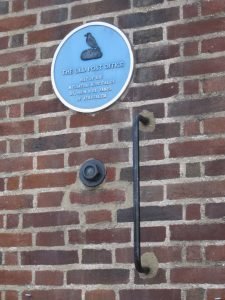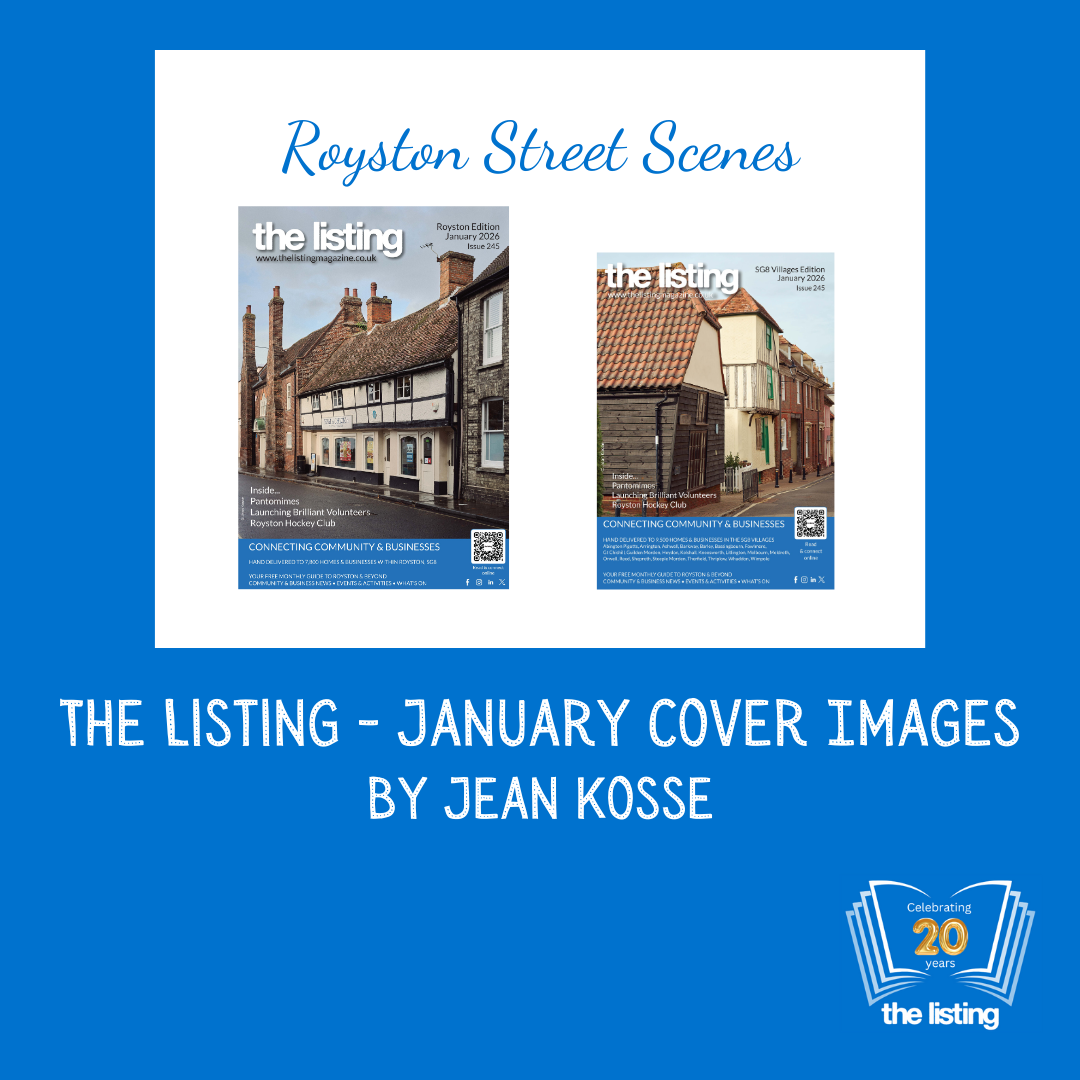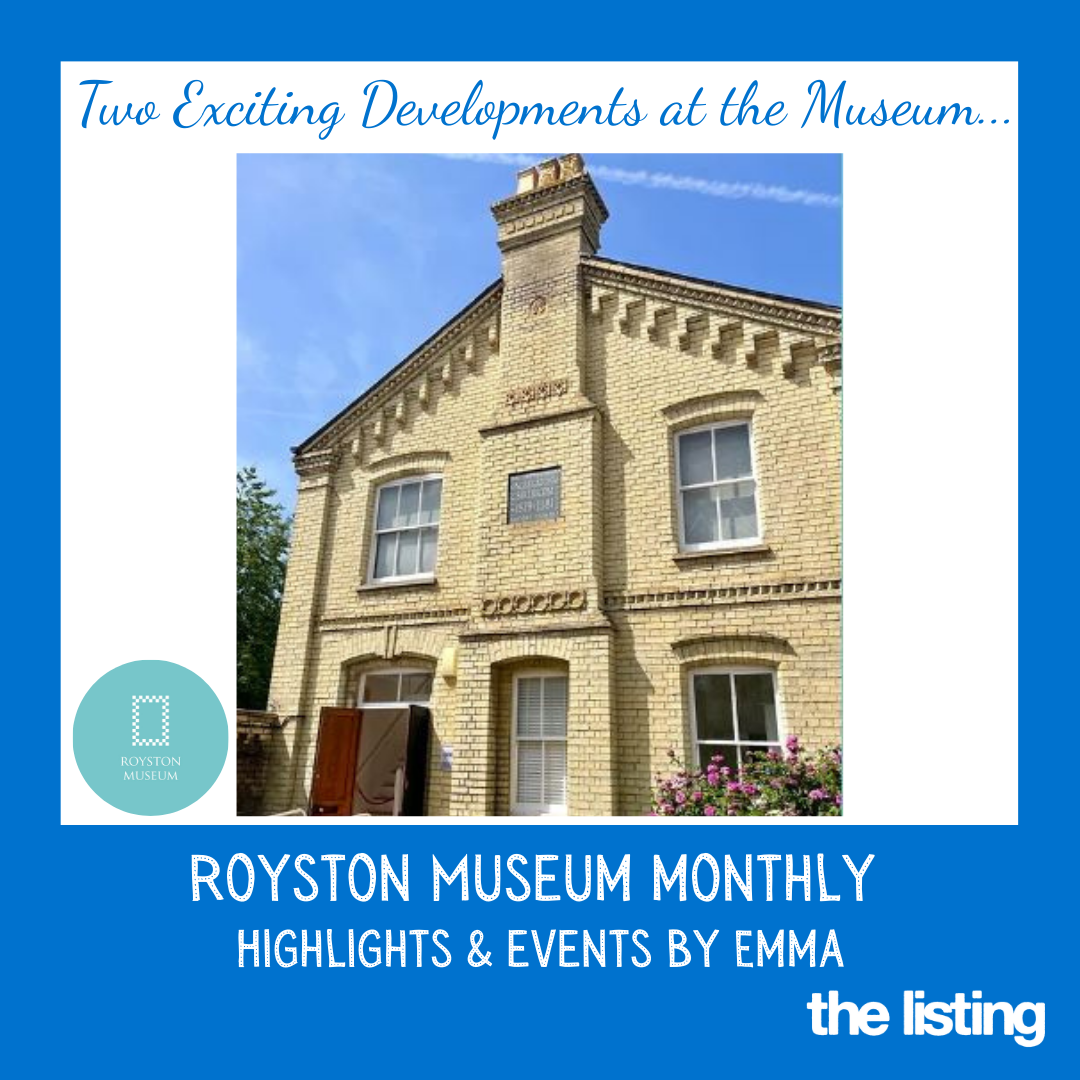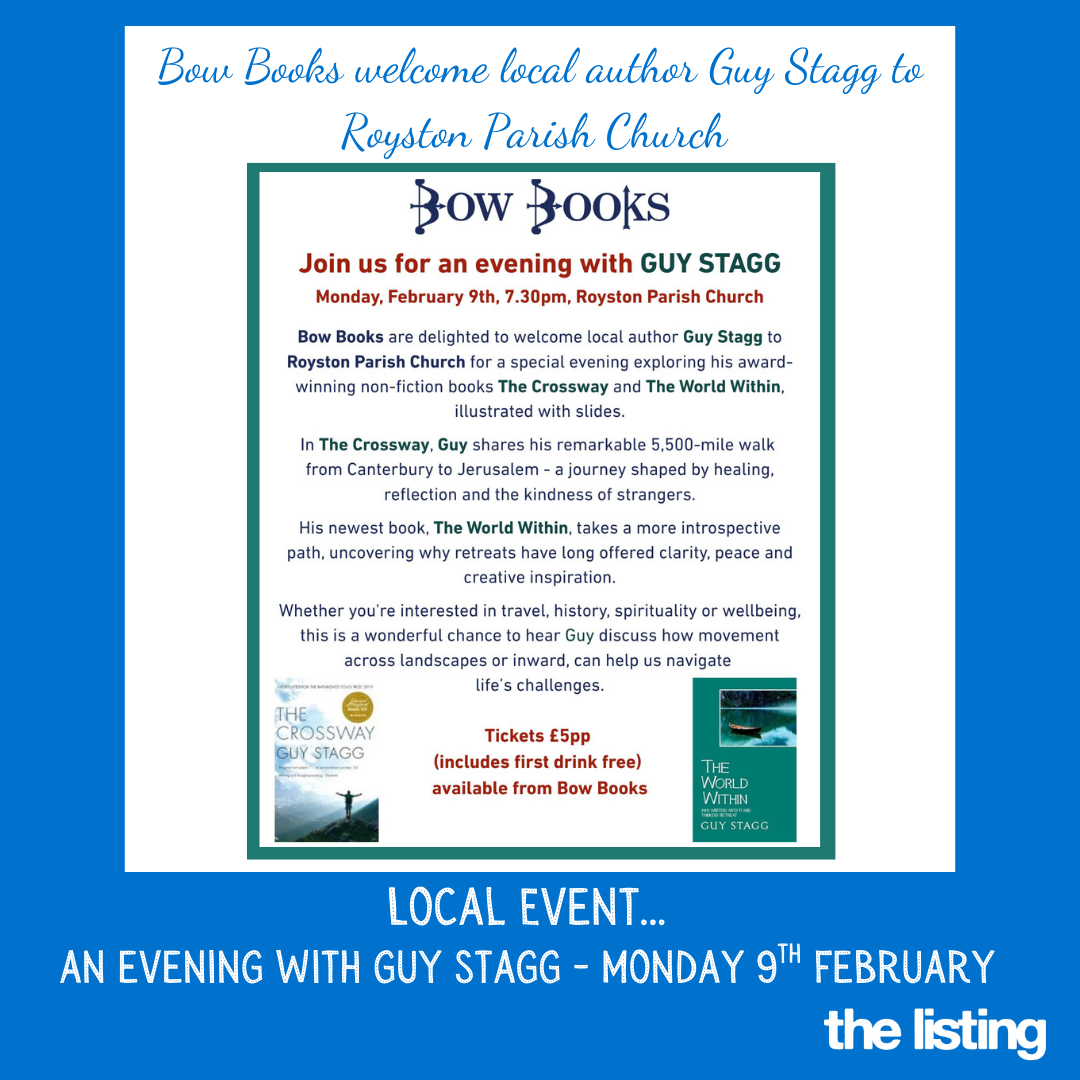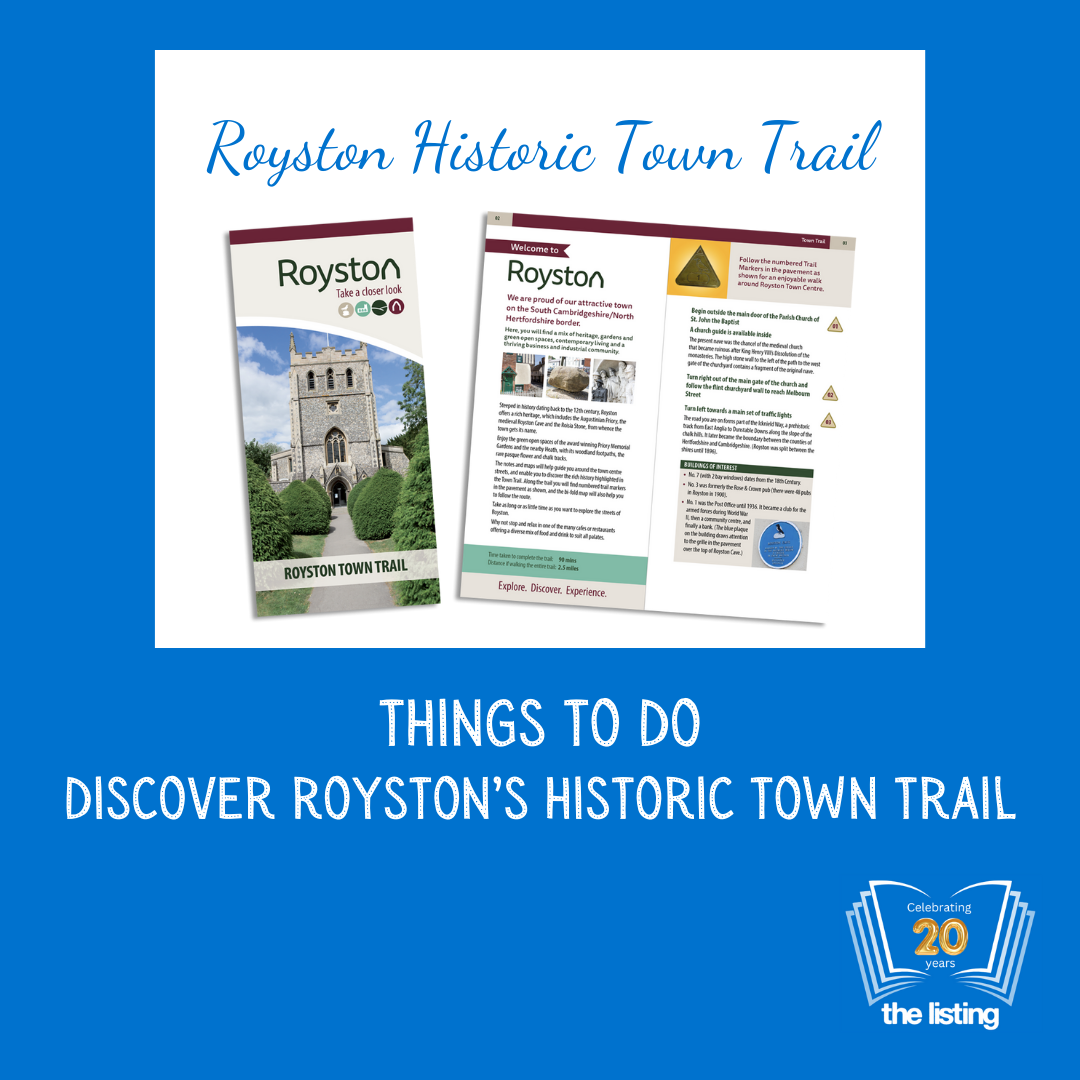Old Royston’s unseen sights
Our lives are so full these days – with 24-hour news, mobile phones that can do pretty much everything for communication, including making calls – we can easily go around with our eyes metaphorically shut. We may have become less observant or, as a survival strategy, we cease to take in things for fear of information overload. Then there are those things we notice once, or someone points them out and then, like the arrow on the FedEx trademark, we can’t avoid seeing them.
The Old Palace
Like many residents living in Royston, I sing the praises of our past and present – Royston Cave, Therfield Heath (an area of Special Scientific Interest) and I’ve bragged about ‘our royal palace’ for the past 25 years. But it wasn’t until a friend Dermot Byrne recently asked if I knew why the Old Palace chimneys were on the front of the building (not in the middle) that I even gave it a second thought.
I hadn’t far to go to find the answer. As Dermot pointed out, I only had to take a look at the picture on the signboard between Kneesworth Street and Lower King Street to see how street widening in the 1700s had chopped the palace building in half. Before then, what was actually the back wall of the original wood-beamed structure extended eight metres into what is now Kneesworth Street – which would probably locate the original edge of the Old Palace building about where the signboard now stands. We’re told it was because of King James’ fear of fire that he ordered the building to be tiled and brick-clad. In his valuable book Royston’s Heritage Buildings, author Peter Ranson details a whole range of other re-workings of the palace buildings on that site – including the chimneys – between 1603 and 1910.
The Old Bull
As most residents know, Royston stands at the crossroads of two ancient routes – Icknield Way (west-east) and Ermine Street (south-north) which explains, among other things, the proliferation of pubs, taverns and coaching inns down through the ages. The significance of Royston’s location on the main route north from London remained until 1980 when the M11 was opened and linking to the A14 gave a faster route east, west and north than the A10 and A1198.
Historically, Royston’s heyday as a stopping point on journeys north and south dates back to the arrival of mail coaches with a cargo that carriers competed to deliver as quickly as possible. This meant having to change tired horses every eight to ten miles and routes were planned with this in mind. Royston was the end of fourth stage of the journey that carried the mail from London to Edinburgh* and The Old Bull was one of two coaching inns (the other being The Chequers) that offered fresh horses, and stabling and refreshment for both animals and humans. Apart from written records of The Old Bull’s role as a coaching inn, there is visible evidence that may qualify as ‘unseen sights’ in Royston High Street.
On the wall of 65 High Street – opposite The Old Bull – is a small square box set into the wall about 2.5 metres above street level where the keys to the main gates of the inn were kept at night. The guard of an incoming coach could reach over to retrieve them before climbing down to open the gates. All that remains of the gated opening on the High Street at the rear of The Old Bull is the lighter coloured brickwork showing the way through until the 1950s, when the former Angel Inn next to the Bull was demolished to make way for the development that is now Angel Pavement.
The Old Post Office
Continuing the theme of royal mail and refreshment stops, a short walk to the bottom of the High Street takes us to another of my friend Dermot’s candidates for one of Royston’s ‘unseen sights’. On the corner of the Jolly Postie, above head height and just below the ‘Old Post Office’ blue plaque is what looks like a hole in the wall with a vertical metal bar to the right. Below this, about a foot above the ground, is what looks like a small step cut into the brickwork. An explanation for this unusual configuration – confirming what Dermot had told me – comes from Royston Reporting Facebook correspondent Julia Humphreys who writes ‘When it was the post office the safe was on the other side of the wall. The hole, handrail and step were used by the person who came along at different times to look through the hole; to make sure the post office wasn’t being broken into and to check the safe!’
Confusingly, although the blue plaque says ‘The Old Post Office’ it’s actually the new one (but not the newest). In his Royston’s Heritage Buildings book, Peter Ranson informs us that 1 Melbourn Street was purpose-built as Royston’s first post office in 1988, remaining as such until it was replaced by the purpose-built post office in Baldock Street in 1936 (although I’ve seen the opening date recorded elsewhere as 1935, and the date it was built as 1927). More than half a century later, this newer ‘old post office’ became the Old Crown pub until it closed in December 2013, reopening as the Jolly Postie in Spring 2015.
Two old milestones
I’m grateful to Peter Ranson for the last ‘unseen Royston sight’ for this piece; in fact it’s a pair of sights – two milestones.
Insert Great North Road milestone image
The ‘more famous’ is no doubt passed unseen by thousands of Royston residents in their cars and is probably also unnoticed by many pedestrians. The milestone is located on the Great North Road, approximately 150 metres north of the York Way junction, where the left turn off the small roundabout leads to the Tesco petrol station.
This milestone’s twin is arguably more visibly but is probably equally unseen to the south – at the bottom on Sun Hill where it joins the A10 London Road. Peter Ranson points out that while the ‘Tesco milestone’ has Grade II listing by Historic England, the Sun Hill sibling does not. Understandably he asks, “Why not?” So, next time you tell visitors about Royston Cave, Therfield Heath and the Old Palace, don’t forget to mention the milestones!
*Which explains the name of the Royal Mail sorting office in Grantham Close – Fourth Stage House
Royston’s Heritage Buildings by Peter Ranson, updated edition 2018, published by the Royston and District History Society is available for reference at Royston Library.


